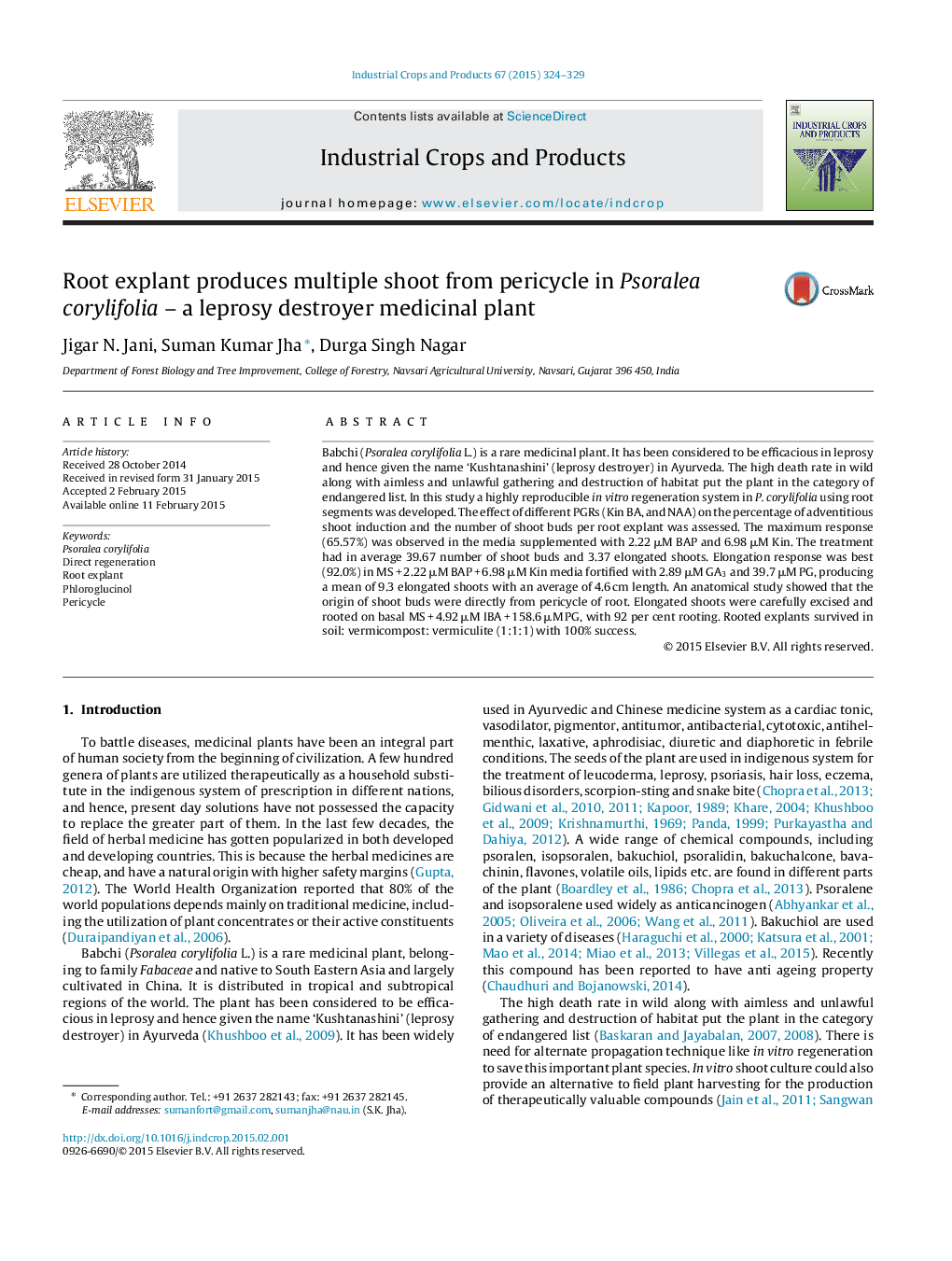| Article ID | Journal | Published Year | Pages | File Type |
|---|---|---|---|---|
| 4513070 | Industrial Crops and Products | 2015 | 6 Pages |
•First report on direct regeneration of Psoralea corylifolia from root explants.•Maximum induction of shoot bud in MS + 2.22 μM BAP + 6.98 μM Kin.•Elongation achieved in MS + 2.22 μM BAP + 6.98 μM Kin media fortified with 2.89 μM GA3 and 39.7 μM phloroglucinol.•Anatomically confirmed that the shoot bud directly sprouted from pericycle of root without intervening callus phase.
Babchi (Psoralea corylifolia L.) is a rare medicinal plant. It has been considered to be efficacious in leprosy and hence given the name ‘Kushtanashini’ (leprosy destroyer) in Ayurveda. The high death rate in wild along with aimless and unlawful gathering and destruction of habitat put the plant in the category of endangered list. In this study a highly reproducible in vitro regeneration system in P. corylifolia using root segments was developed. The effect of different PGRs (Kin BA, and NAA) on the percentage of adventitious shoot induction and the number of shoot buds per root explant was assessed. The maximum response (65.57%) was observed in the media supplemented with 2.22 μM BAP and 6.98 μM Kin. The treatment had in average 39.67 number of shoot buds and 3.37 elongated shoots. Elongation response was best (92.0%) in MS + 2.22 μM BAP + 6.98 μM Kin media fortified with 2.89 μM GA3 and 39.7 μM PG, producing a mean of 9.3 elongated shoots with an average of 4.6 cm length. An anatomical study showed that the origin of shoot buds were directly from pericycle of root. Elongated shoots were carefully excised and rooted on basal MS + 4.92 μM IBA + 158.6 μM PG, with 92 per cent rooting. Rooted explants survived in soil: vermicompost: vermiculite (1:1:1) with 100% success.
Graphical abstractFigure optionsDownload full-size imageDownload as PowerPoint slide
